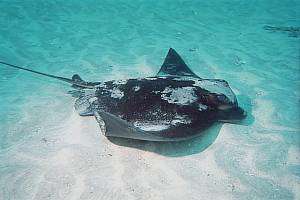 |
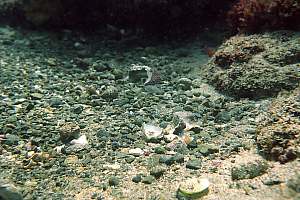 |
| Keywords: NZ, New Zealand, rays, sting rays, eagle ray, short tailed, long tailed, |
Eagle Ray (Myliobatis tenuicaudatus)
 |
 |
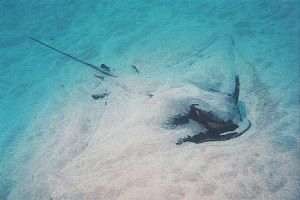 |
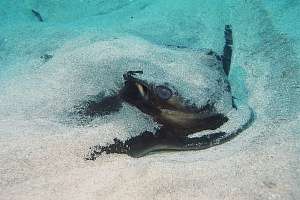 |
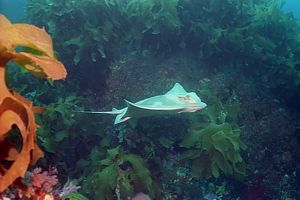 |
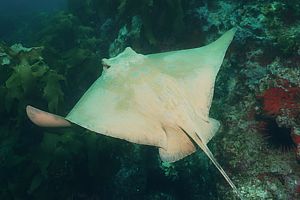 |
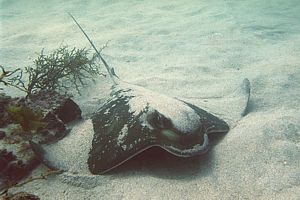 |
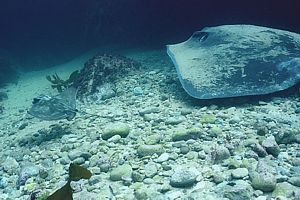 |
Short-tailed stingray (Dasyatis brevicaudata)
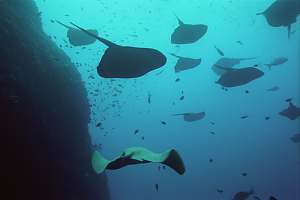 |
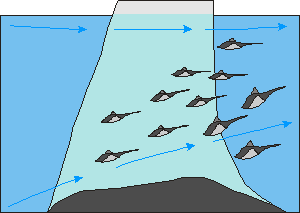 |
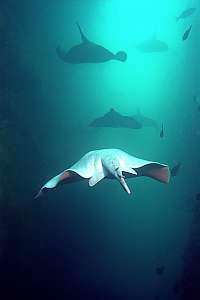 |
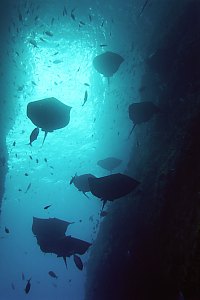
f020507: sting rays hanging inside Northern Arch. The shape of this arch can clearly be seen: a narrow slot of 40m deep by 8m wide. The light patch on top shows the shape of the air space above the water. |
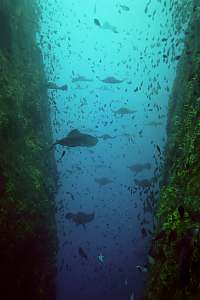 |
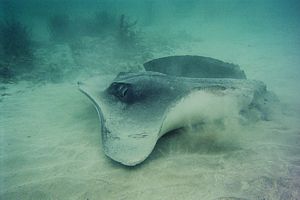 |
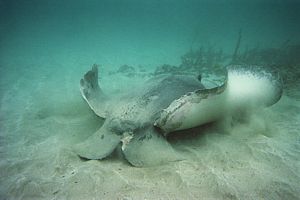 |
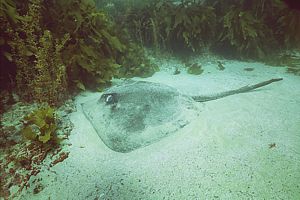 |
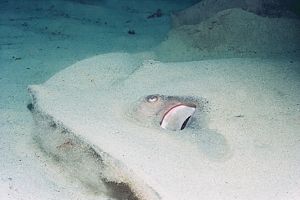 |
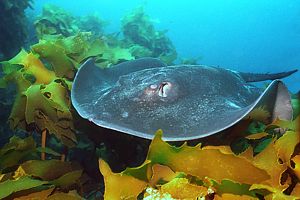 |
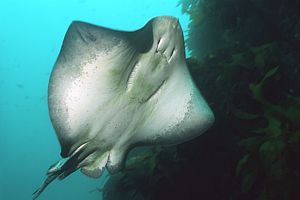 |
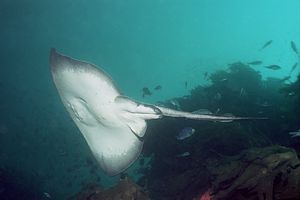 |
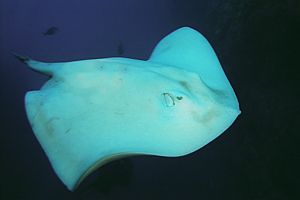 |
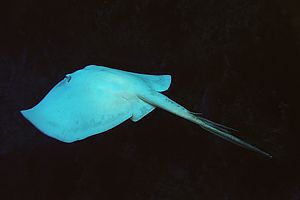 |
Longtailed stingray (Dasyatis thetidis)
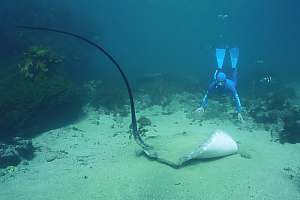 |
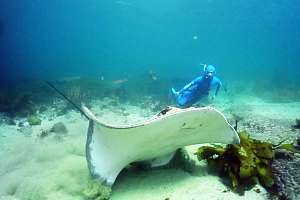 |
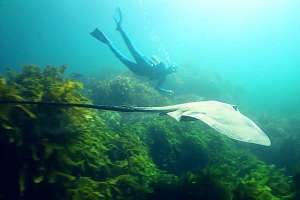 |
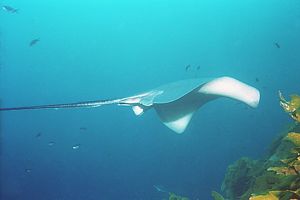 |
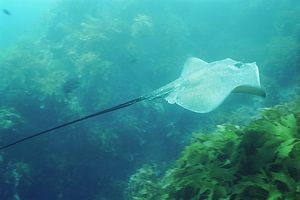 |
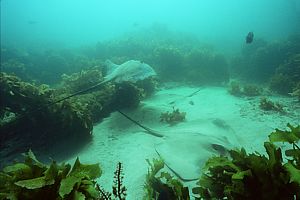 |
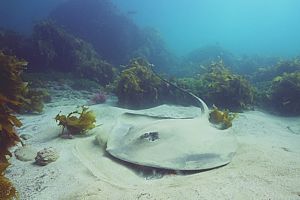 |
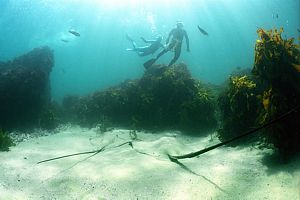 |
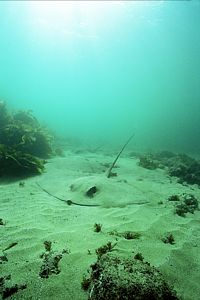 |
| Do
stingrays have wings?
Birds have wings with bones and muscles inside, and feathers outside. Bats have wings in the form of a thin skin between their fingers. Flying squirrels have a loose pelt between arms and legs with which they can glide from tree to tree. Flying fish have extended breast fins that allow them to soar up to 10m high and some 100 metres along. Aircraft have wings made from aluminium, helicopters have narrow wings that spin, . . . and so on. Rays are 'primitive' cartilegeous (soft-boned) fishes whose bodies have flattened sideways. So their wings are just part of their flat bodies. But they truly use these for 'flying' through the water. The eagle ray indeed flies like a bird, effortlessly and elegantly, travelling considerable distances even for just a meal. The short-tailed stingray is so strong that it can take off or reverse with a loud bang caused by cavitation. Cavitation happens when the water cannot swiftly follow the wing movement, resulting in a vacuum. As the water catches up, the vacuum collapses with a loud bang. The stingray's arch enemy, the orca can do so too with its mighty tail. The short-tailed stingray is often seen 'fluttering' its wings, rippling their wing tips in a playful and semi-erratic way. |
-- Seafriends home -- photo
stock library -- UW photography
-- Seafriends site map -- Rev 20060808,20070730,